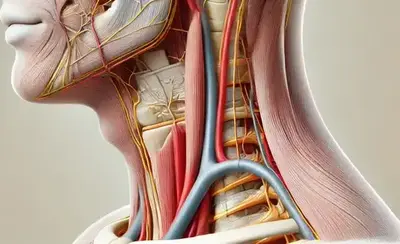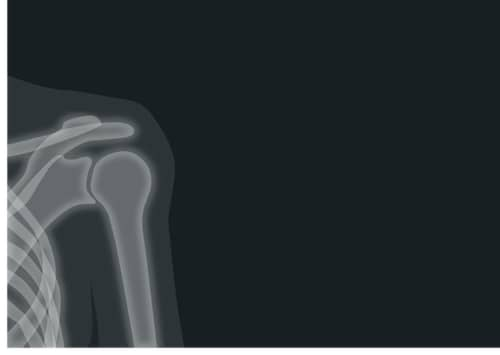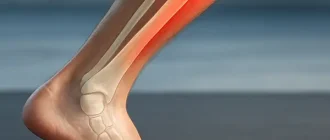The Unwelcome Surprise: What is Sharp Neck Pain?
Imagine turning your head to glance at something, and bam—a sharp, stabbing pain surges through your neck, making even the slightest movement unbearable. This type of pain is not only disruptive but can also be alarming. Let’s unpack the nature of this discomfort, its possible causes, and how people manage to cope with and recover from it.
Understanding the Pain: Is It More Than a Stiff Neck?
The key characteristic of sharp, shooting neck pain is its sudden intensity. Unlike a dull ache or stiffness, this pain feels like an electric shock or stabbing sensation, often radiating into the shoulders, arms, or even down the spine. It’s typically triggered by neck movements such as looking to the side, tilting the head back, or even reaching for something on a high shelf.
| Symptom | Description |
|---|---|
| Sudden, sharp pain | Electric-like jolt that appears with neck movement |
| Pain radiation | Shooting pain extending to the arms, shoulders, or upper back |
| Limited motion | Reduced range of motion in the neck due to fear or pain |
| Tingling/numbness | Numbness or pins-and-needles sensation, often accompanying the pain |
Case Study: How Valentin Faced His Neck Pain
Valentin, a 38-year-old graphic designer, was always glued to his desk, editing images for hours on end. One day, while reaching for his phone, he felt a sharp, shooting pain in the right side of his neck that jolted him to a standstill. Even breathing seemed to make the pain worse.
Valentin tried to push through the discomfort, assuming it was just a minor tweak. But when the pain started radiating down his arm, leaving his fingers tingling, he knew it was time to seek medical help.
What the Doctors Found
After consulting with a doctor, Valentin was diagnosed with cervical radiculopathy, a condition where nerves in the neck become compressed or irritated, leading to sharp pain and tingling in the arms. Valentin’s work habits—long hours of sitting with poor posture—had likely caused a disc in his neck to press on a nearby nerve.
The treatment? A mix of physical therapy, ergonomic adjustments, and a short course of anti-inflammatory medication. Valentin saw major improvements within a few weeks.
The Common Culprits: Causes of Sharp Neck Pain
Sharp neck pain can arise from various issues, some more serious than others. Here are the most common causes:
| Cause | Description |
|---|---|
| Muscle Strain | Overstretching or tearing of neck muscles due to sudden movement or poor posture |
| Herniated Disc | The cushioning disc between vertebrae slips out of place, pressing on a nearby nerve |
| Cervical Radiculopathy | Compression or irritation of a nerve root in the neck, leading to shooting pain |
| Facet Joint Dysfunction | Problems with the small joints in the back of the neck, causing sharp pain upon movement |
| Whiplash | A sudden force that jerks the head, typically from car accidents, can lead to sharp pain |
| Arthritis | Wear and tear on the neck joints, leading to inflammation and sharp discomfort |
Patient Experience: Where the Pain Starts—and Where It Ends
Some patients describe their pain as a “bolt of lightning,” while others feel as if “something snapped.” The key here is that this pain often comes with a sense of fear, as people hesitate to move, worried about triggering another jolt. The psychological impact can be just as intense as the physical symptoms, especially if the pain lasts longer than expected.
| Type of Pain | Example Patients’ Description |
|---|---|
| Electric shock-like pain | “It was like someone flipped a switch in my neck.” |
| Throbbing pain | “I felt like my neck was pulsating, but sharply.” |
| Referred arm pain | “The pain shot from my neck all the way down my arm.” |
| Nerve pain with tingling | “It wasn’t just pain, my fingers felt like they were buzzing.” |
Practical Solutions: What Can Be Done?
While the pain may seem unbearable at first, relief is possible. Treatments range from home care to more involved medical interventions, depending on the severity of the condition.
Home Remedies
- Rest: Avoid sudden movements that trigger pain, allowing the neck muscles to recover.
- Ice and Heat: Apply ice for the first 48 hours to reduce inflammation, then switch to heat to relax muscles.
- Ergonomic Changes: Adjust your workspace to reduce strain on the neck.
Medical Interventions
- Physical Therapy: Strengthening exercises to support the neck muscles and improve mobility.
- Medications: Nonsteroidal anti-inflammatory drugs (NSAIDs) to reduce inflammation and pain.
- Steroid Injections: For more severe cases, corticosteroid injections can provide temporary relief.
- Surgery: Rarely needed, but an option if conservative treatments fail to address nerve compression.
You’re Not Alone
Sharp, shooting neck pain can feel overwhelming, but you’re not alone. Whether it’s caused by a herniated disc, nerve compression, or muscle strain, understanding the root cause is the first step toward relief. Patient stories like those of Valentin and Daniela show that with the right treatment plan, life can return to normal—and sometimes even better than before.
Don’t wait. If you’re experiencing sharp neck pain, consult a healthcare professional to start your journey toward recovery.
About the Author
Reyus Mammadli is the author of this health blog since 2008. With a background in medical and biotechnical devices, he has over 15 years of experience working with medical literature and expert guidelines from WHO, CDC, Mayo Clinic, and others. His goal is to present clear, accurate health information for everyday readers — not as a substitute for medical advice.







